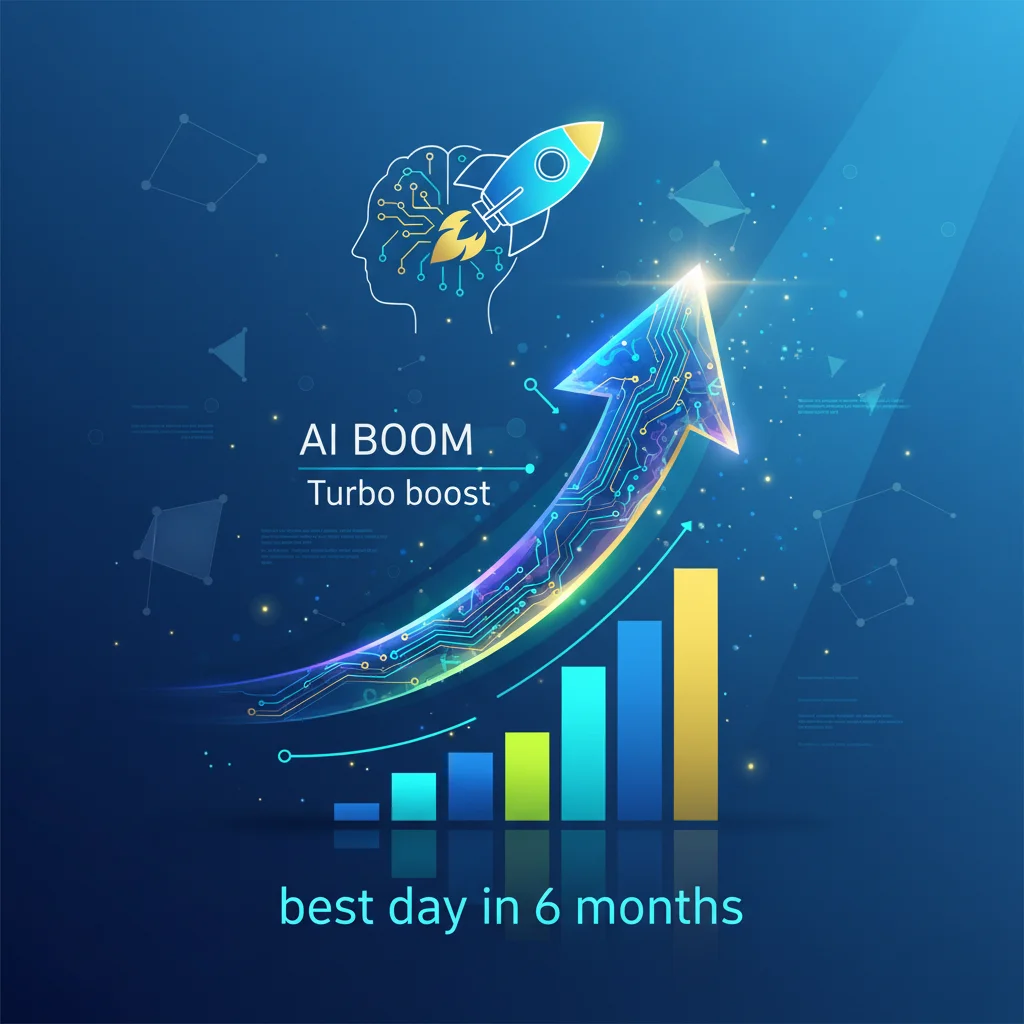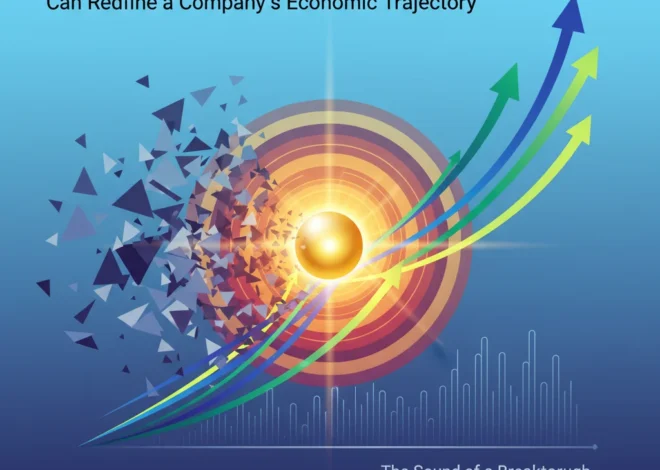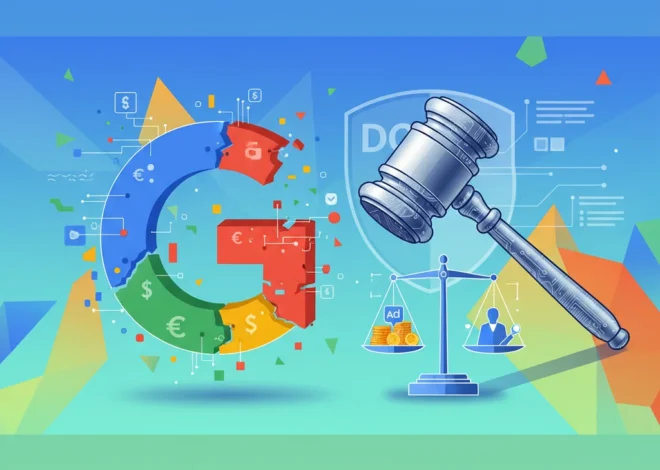
Tech Stocks Just Had Their Best Day in 6 Months: Is the AI Boom About to Get a Turbo Boost?
If you felt a tremor in the force of the tech world recently, you weren’t imagining it. The Nasdaq, the high-tech heartbeat of the stock market, just experienced its most significant single-day surge in over six months. But this wasn’t just a random blip on the screen. It was a powerful signal, a collective roar from investors fueled by a single, potent idea: the Federal Reserve might be ready to ease up on the economic brakes.
According to reports from the Financial Times, this massive jump in US tech stocks is directly tied to mounting expectations that the Fed will lower borrowing costs as soon as December. For the average person, the Federal Reserve’s decisions on interest rates can feel abstract and distant. But for the tech industry—from the largest cloud providers to the smallest startups—these decisions are the very air they breathe.
So, what does this market euphoria really mean? Is this a sign that the “VC winter” is finally thawing? And how does a shift in monetary policy connect to the groundbreaking work happening in artificial intelligence, machine learning, and SaaS? Let’s unpack the complex machinery behind this rally and explore what it signals for developers, entrepreneurs, and tech professionals everywhere.
Decoding the Market’s Message: Why Interest Rates are Tech’s Secret Ingredient
To understand why the tech world gets so excited about potential rate cuts, we need to talk about a simple but powerful concept: the value of the future. Tech companies, especially those in high-growth sectors like AI and cloud computing, are valued not just on what they earn today, but on what investors believe they will earn years or even decades from now.
Think of it like a seesaw. On one side, you have “safe” investments, like government bonds, whose returns are heavily influenced by the Fed’s interest rate. On the other side, you have “growth” investments, like tech stocks.
When interest rates are high, those safe investments become very attractive. Why take a risky bet on a new software company’s future profits when you can get a guaranteed, solid return right now? This pushes the “safe” side of the seesaw down and the “growth” side up, making tech stocks less appealing. High rates also make borrowing money for expansion, research, and development more expensive, which can stifle innovation.
But when the market starts to believe rate cuts are on the horizon, the seesaw tips the other way. The anticipation of lower borrowing costs makes those “safe” returns less impressive. Suddenly, the massive potential of future profits from a company developing the next big thing in automation or cybersecurity looks far more compelling. This is the core reason the Nasdaq, packed with these future-focused companies, reacted so strongly.
From Racetrack to Railway: How Formula 1 AI is Fixing Your Terrible Train Wi-Fi
The Ripple Effect: From Wall Street to Your Workspace
This shift isn’t just a numbers game for traders. It has tangible consequences that ripple through the entire tech ecosystem, affecting everything from startup funding to your own career trajectory.
For Startups and Venture Capital
The past couple of years have been tough for fundraising. Higher interest rates made investors more risk-averse, leading to a “VC winter” where capital was harder to come by. A pivot towards lower rates could be the first sign of a spring thaw. Cheaper capital means:
- VCs can raise new funds more easily.
- Investors are more willing to write checks for promising, but not yet profitable, startups.
- Founders may find it easier to secure the funding needed to scale their operations, hire top talent, and invest in R&D.
For Big Tech
Established giants also benefit. While they may not be as reliant on venture capital, lower borrowing costs make it cheaper to fund massive, capital-intensive projects. Think building new data centers for cloud services, acquiring smaller companies to bolster their AI capabilities, or pouring billions into the next generation of machine learning models.
For Developers, Programmers, and Tech Professionals
A healthier investment climate translates directly into a more robust job market. When companies, both big and small, have better access to capital and a more optimistic outlook, they are more likely to:
- Hire aggressively: The demand for skilled engineers, data scientists, and cybersecurity experts could intensify.
- Invest in talent: Compensation packages, including valuable stock options, may become more competitive.
- Launch new projects: More funding for innovation means more exciting, cutting-edge work for those in the field of programming and product development.
Fueling the Engines of Innovation: AI, Cloud, and Automation
The market isn’t just betting on “tech” in a generic sense. The enthusiasm is laser-focused on the sectors poised for exponential growth, where the promise of future earnings is most profound. The prospect of lower interest rates acts like a powerful accelerant for these specific areas.
The recent surge in tech stocks highlights investor confidence in the long-term viability of these key sectors. Let’s look at how this economic shift could impact them:
| Tech Sector | Impact of Lower Interest Rates |
|---|---|
| Artificial Intelligence & Machine Learning | AI development is incredibly capital-intensive, requiring massive investment in GPUs, data, and top-tier talent. Lower borrowing costs make these huge, long-term bets on foundational models and AI-powered software more financially viable. |
| Cloud & SaaS (Software-as-a-Service) | The value of these business models is tied to long-term recurring revenue. A lower interest rate (or “discount rate”) makes that future stream of subscription fees significantly more valuable in today’s dollars, boosting company valuations. |
| Automation & Robotics | Implementing large-scale automation requires significant upfront investment. Cheaper capital encourages companies to invest in these efficiency-boosting technologies, accelerating adoption and fueling growth for the companies that provide them. |
| Cybersecurity | As businesses become more reliant on cloud and AI, the need for advanced cybersecurity becomes non-negotiable. This sector benefits from the overall growth of the digital economy, which is itself spurred by a more favorable economic environment. |
Essentially, the financial environment is aligning to pour fuel on the already white-hot fire of technological innovation. The breakthroughs we’re seeing in AI are just the beginning, and a more accommodating monetary policy could be the catalyst that turns groundbreaking prototypes into mainstream applications.
The £4 Million Tweet: Deconstructing the Twitter Hack and the New Era of AI-Driven Cybersecurity
What This Means For You: Actionable Takeaways for the Road Ahead
So, how do you translate this macroeconomic news into personal or professional strategy? Here are a few thoughts for different players in the tech landscape:
- For Entrepreneurs & Startup Founders: If you’ve been holding off on fundraising, now might be the time to start polishing your pitch deck. Investor sentiment is shifting, and a window of opportunity may be opening. Focus your narrative on long-term growth and how your innovation will capture a piece of the future.
- For Developers & Programmers: Your skills are at the center of this revolution. This market signal is a massive vote of confidence in the value of what you do. Double down on high-demand areas like machine learning, cloud architecture, and applied AI. Your expertise in programming and building scalable systems is more critical than ever.
- For Tech Leaders & Investors: The landscape is becoming more favorable for growth, but don’t throw caution to the wind. Focus on companies with strong fundamentals and a clear path to profitability. The rising tide will lift many boats, but the ones with the strongest engines and most skilled captains will ultimately win the race.
The UK's Risky Gamble: Will Banning Ransomware Payments Save Us or Sink Us?
The Road Ahead: A Fusion of Code and Capital
The Nasdaq’s biggest jump in six months is more than just a headline; it’s a reflection of a deep, symbiotic relationship between financial policy and technological progress. It’s a reminder that the code being written in a garage in Palo Alto is intrinsically linked to the decisions being made in the marble halls of the Federal Reserve.
While uncertainty remains, the message from the market is one of renewed optimism. It’s a bet that the incredible pace of innovation in artificial intelligence, software, and automation is a powerful enough force to drive a new era of growth, especially when supported by a more favorable economic tailwind. For everyone in the tech industry, the coming months will be a fascinating time to watch as the worlds of code and capital collide, potentially unlocking the next great wave of technological advancement.


